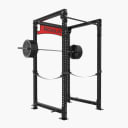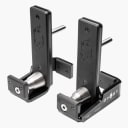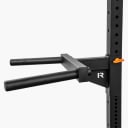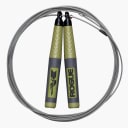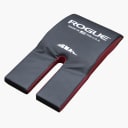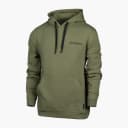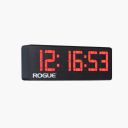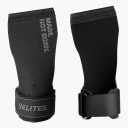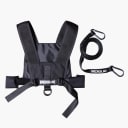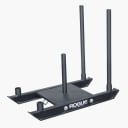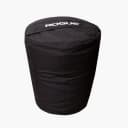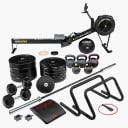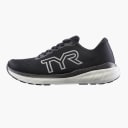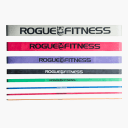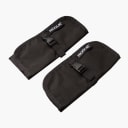
The Turkish Get-Up CHALLENGE
April 22 - 25, 2022
A Turkish get-up for max weight using a barbell and plates.
Traditionally, a Turkish get-up is a sequence of movements that involves the athlete moving from a lying position to a standing position and then back to a lying position. For this challenge, athletes will only be required to move from the initial lying position to the standing position.
Tie Breaker: Body Weight
- Note - Body weight will only be requested following the competition in the event of a tie between two competitors
- Lighter body weight would win the tie
- Note: Athletes may make as many attempts during their challenge video as they would like. Video submissions may not exceed 10 minutes in length.
PRIZE PACKAGES
Male Winner
| 1st Place | $2500 & Ohio bar + Full competition plate set (45lb-25lb) |
| 2nd Place | $1000 & Full competition plate set (45lb-25lb) |
| 3rd Place | $500 & Pair of 45lb competition plates |
Female Winner
| 1st Place | $2500 & Bella bar + Full competition plate set (45lb-25lb) |
| 2nd Place | $1000 & Full competition plate set (45lb-25lb) |
| 3rd Place | $500 & Pair of 45lb competition plates |
TOP 3 GYMS WITH SIGN-UPS
Total entries per gym
* Tie breaker is the highest placing team member
| 1st Place | Full competition plate set (45lb-25lb) |
| 2nd Place | Full competition plate set (45lb-25lb) |
| 3rd Place | Full competition plate set (45lb-25lb) |
The Turkish Get-Up CHALLENGE
A Turkish get-up for max weight using a barbell
CHALLENGE AND SCORING
A Turkish get-up for max weight using a barbell and plates.
Traditionally, a Turkish get-up is a sequence of movements that involves the athlete moving from a lying position to a standing position and then back to a lying position. For this challenge, athletes will only be required to move from the initial lying position to the standing position.
Tie Breaker: Body Weight
- Note - Body weight will only be requested following the competition in the event of a tie between two competitors
- Lighter body weight would win the tie
- Note: Athletes may make as many attempts during their challenge video as they would like. Video submissions may not exceed 10 minutes in length.
DEADLINES AND SUBMISSIONS
Challenge Start Date & Time: April 22 at 12PM EST
Challenge Close Date & Time: April 25 at 8PM EST
*Scores cannot be updated or added to the leaderboard following the competition close date and time. Please allow sufficient time for completing and submitting your score and video in advance
ELIGIBILITY STANDARDS AND AGE GROUPS
Male (14 and over)
Female (14 and over)
To be considered as a competitor, the athlete must register for the challenge at roguefitness.com/challenges and follow all workout and video flows as outlined.
EQUIPMENT NEEDED TO QUALIFY
- Digital Weight Scale to confirm athlete's bodyweight and equipment to be used for your lift
- Tape Measure
- Standard 15kg/25 mm (35 LB) or 20kg/28.5 mm (45 LB) barbell
- Minimum length of the 45 LB barbell needs to be 86"
- Minimum length of the 35 LB barbell needs to be 79"
- Center Knurling is permitted
- Weight Plates with the weight clearly marked
- Max of 18" diameter
- Minimum plate increments of 1LB or 0.5kg per side
- Barbell Collars
- Recommended: 15' x 15' clear unobstructed area in which to lift, with no other equipment in the space apart from the bar and plates the athlete will use during their attempts
- Rogue brand gear is not required
Permitted Equipment:
- Gym chalk (magnesium carbonate)
- Mouth Guards
- Nose Strips
Not Permitted Equipment:
- Lifting belts of any type
- Liquid Chalk
- Tacky of any kind
- Lifting straps, support straps or any other kind of straps
- Braces of any kind
- Gloves or any type of hand or forearm coverings
- Grip shirts
- Tape of any kind anywhere on the clothing, body or barbell
- Sticky adhesives or grip adhesives of any kind anywhere on the clothing, body or barbell including spray or other
- Supersuits, support briefs, or other supportive gear
- Knee Sleeves or wraps/elbow sleeves or wraps
- Long sleeve shirts of any kind
MOVEMENT STANDARDS
Get-up:
The movement begins with the athlete laying flat on their back with their head, back and legs fully extended
- The loaded barbell lying next to them on the ground
The athlete will then pick up and press the barbell above their chest to the starting position defined below
- Athlete may use either one or both arms to reach this position
- This must be completed without outside assistance.
Start Position
The barbell is in the "start position" once it is held with one hand over the athlete's chest.
- Athlete lying flat with their back fully on the ground
- Athlete has removed their second hand from the barbell and is only supporting the bar with one hand/arm. The bar must stay in this same hand for the remainder of the lift
- The athlete clearly demonstrates control of the barbell with one hand in the start position prior to move to the stand up.
- Once the athlete is in the starting position, no part of the barbell or weights may touch the floor and there must be no assistance from the other arm from this point onwards.
Standing Up
From the approved start position, the athlete must then stand to full extension of the knees and hips while maintaining the barbell in the overhead position with one arm
- The athlete's hand holding the barbell, must remain above the head at all times. If the hand dips below the top of their head, the attempt is over
- The barbell may not touch the ground, any parts of the body or any other objects during the attempt
- The athlete's arm does not need to be locked out during the stand up
- The athlete may not touch the barbell or plates with their off hand
- The athlete may not receive assistance in anyway during this portion of the movement
Finishing Position
The lift is over as soon as the athlete is standing at full extension demonstrating control of the barbell over head
- Knees and hips need to be at full extension
- The arm holding the barbell overhead needs to be at full extension/locked out
- After achieving the approved over head finishing position, the athlete may return the barbell to the ground in any manner.
See the Get-up instructional video at www.roguefitness.com/challenges for a visual example of the prescribed movement. Any athlete who alters/modifies the equipment or movements described in this document or shown in the video standards may be disqualified from the competition if deemed by the head judges to give an unfair advantage.
FLOW
The barbell begins on the ground with the lifter lying on the floor next to it.
When the lifter is ready they will pick up the barbell and press it to the approved starting position directly over their chest.
- Full movement standards listed above
Once the barbell is in the approved starting position, the athlete may begin the get-up movement
- Full movement standards listed above
Once the athlete has achieved the approved finish position the lift is complete
- Full movement standards listed above
If the athlete is going for another attempt during the same video:
- Athletes may make as many attempts during their video as they would like.
- Video submissions may not exceed 10 minutes in length.
VIDEO SUBMISSION STANDARDS
All video submissions should be uncut and unedited in order to accurately display the performance. Videos shot with a fish-eye lens or similar lens may be rejected due to the visual distortion these lenses cause. Sound should be on during the filming. Be sure the athlete has adequate space to safely complete the movement and clear the area of all extra equipment, people, or other obstructions so that the video is clear.
The video should be shot from a 45 degree angle of the athlete with the camera positioned at a height that is level with the athlete's shoulders. Critical items that need to be clearly visible on the video:
- All equipment to be used being weighed on digital scales prior to challenge attempt
- Full range of motion for this movement including the entire body of the athlete from the feet on the floor to the finish position with barbell locked out overhead at all times during the entire attempt.
- The barbell being lifted without assistance
- Clear control and pause in the start position before starting the get-up
- Clear control and pause in the finish position with the barbell overhead
The athlete will need to follow the steps outlined below:
- The submitted video should start with the entire athlete in frame stating their name followed by the challenge name and their division.
- The camera should then clearly show all equipment the athlete will use during their challenge. All of the following must be shown:
- Barbell, to include end caps
- All weight plates that will be used in their attempt
- Plates need to clearly have the weights printed on them, and both sides must be displayed to the camera
- All gear needs to stay in camera shot during the entire video
- The athlete must weigh all plates and barbell on camera.
- This process needs to start with showing scale calibration by placing a kettlebell/dumbbell on the scale and showing the scale reading is correct.
- The camera must show each plate on the scale and show the scale reading, the entire scale must be clearly visible to the camera
- The camera must show the barbell on the scale and show the scale reading
- Required regardless of equipment brand
- The athlete should take their measuring tape and measure the overall length of the barbell to confirm it matches the lengths listed above.
- The camera needs to zoom in to show a close up of the measurement confirming it meets the specs outlined in the rules.
- Please verbally say the measurement as the camera shows the tape measure.
- The athlete can now load the barbell and declare their challenge weight
- The camera needs to capture the entire barbell setup after the bar is loaded
- The athlete needs to show the camera all supportive equipment they are wearing or will wear for the challenge to confirm it all matches the rules outlined.
- The camera should then move to the final filming position.
- 45 degrees to the final filming position with all equipment in full view ready for the workout.
- Once the athlete is ready, they may begin their challenge attempt
- If making multiple attempts and changing the barbell load the athlete will then need to confirm the weight of the barbell they will use before each attempt and clearly show any plate changes to the camera.
- All of the steps above should be done with the camera continuously running for the video to be accepted.
- Failure to show these steps/items could make the video submission subject to rejection at the judges' discretion.
- Refer to The get-up Challenge demo video on the Rogue website for a visual of how the workout and video should flow.





